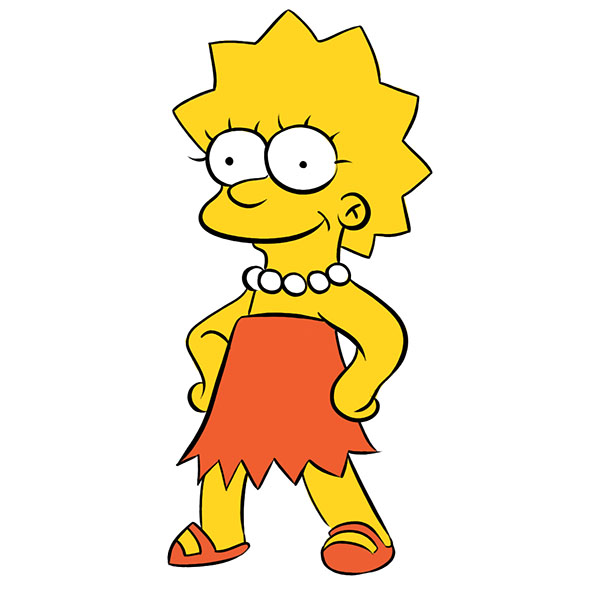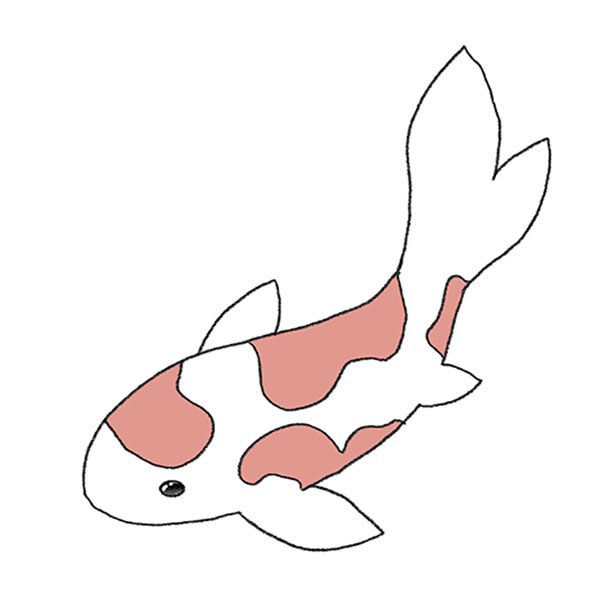How to Draw an Anchor
Sailing through the sea of artistic creation, today we anchor our skills in the harbor of illustration. I’ve crafted a tutorial on how to draw an anchor, designed to guide novices and seasoned artists alike through calm waters. With each stroke, we’ll draw closer to capturing the essence of strength and stability that an anchor represents.


How to Draw an Anchor: Basic Information
Hoist your sails of imagination, for we are about to embark on a voyage to capture the stalwart anchor. In this lesson on how to draw an anchor, I will guide you through tranquil waters to illustrate this nautical symbol with ease and grace. Each line will draw us closer to anchoring our artwork in the realm of maritime majesty.
I’ve designed this tutorial to break down the anchor into simple shapes, ensuring smooth sailing for artists of all skill levels. The anchor we craft together will not just be a figure of iron; it’s the keeper of stories, the holder of ships, translated into the language of lines and curves. It’s a journey of creating not just an image, but a symbol of steadfastness.
As our drawing journey concludes, you’ll find that to draw an anchor is to weave a piece of the ocean‘s soul into your canvas. With this tutorial, I’ve charted a course that turns the daunting into the doable. May your finished piece be a lighthouse that guides you to the shores of artistic fulfillment.
Anchor Drawing Tutorial
Materials
- Pencil
- Paper
- Eraser
- Coloring supplies
Time needed: 20 minutes
How to Draw an Anchor
- Draw the shank.
Depict two straight parallel lines. These will be auxiliary lines.
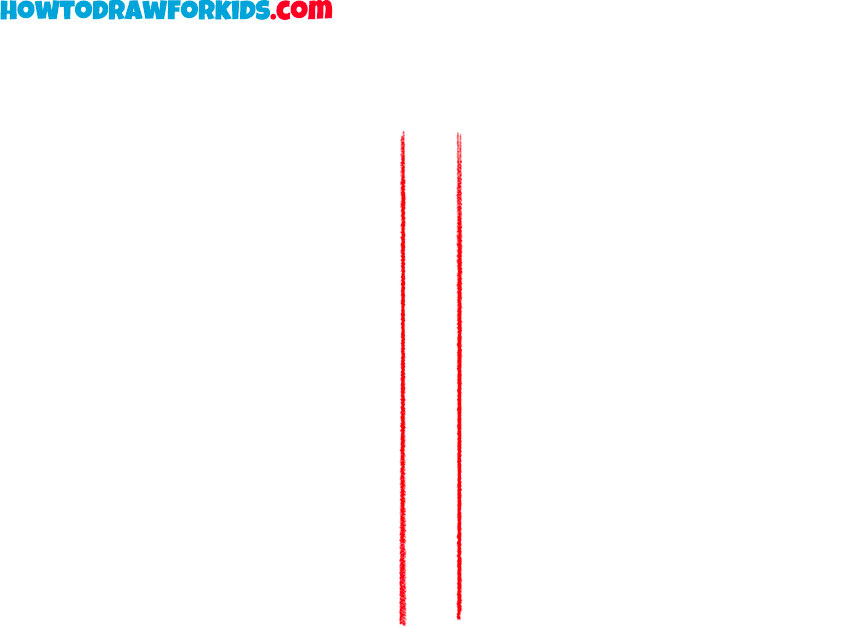
- Outline the top of the anchor arm.
Draw the same curved lines on the right and left sides of the previously drawn lines.

- Add the lower part of the anchor crown.
Depict the curved line at the bottom of the anchor. It looks pointed in the middle.
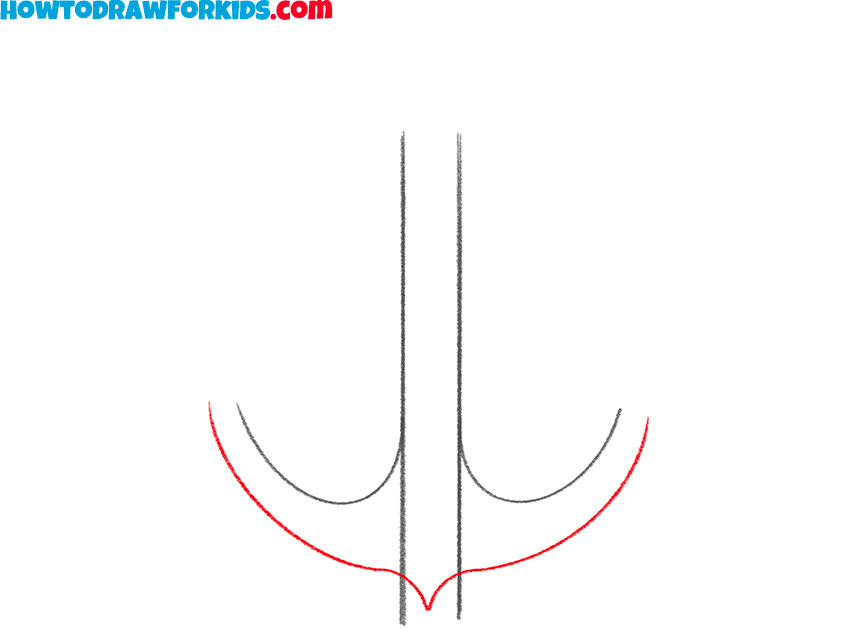
- Draw the anchor flukes.
You can depict it as two identical triangles on the right and left sides.
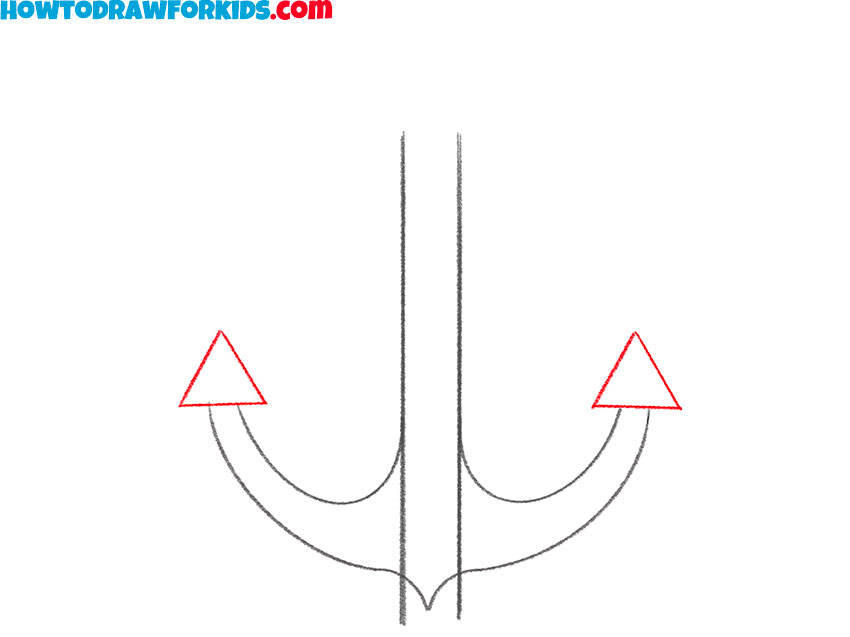
- Outline the anchor ring.
Draw two circles of different sizes at the top of the anchor.
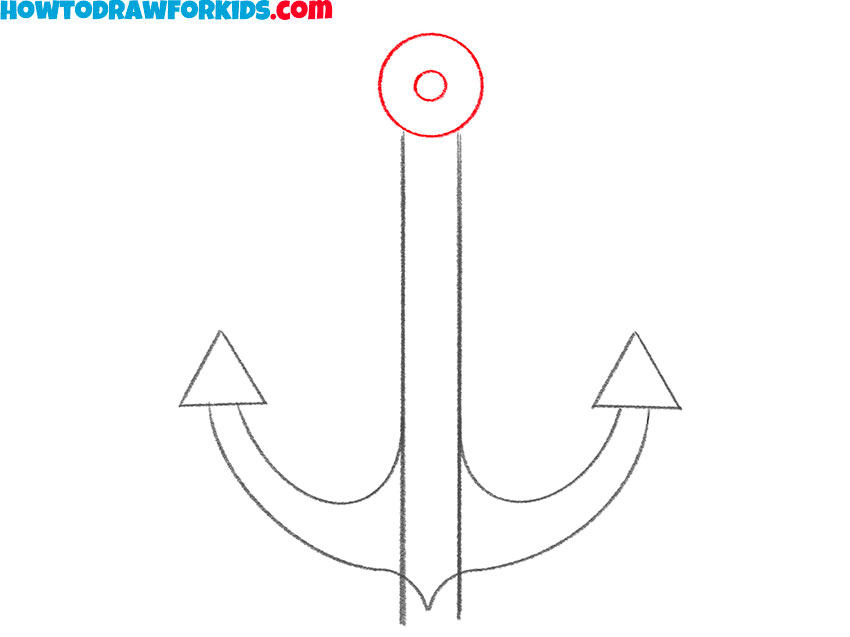
- Add the anchor stock.
Start drawing this detail by depicting two parallel horizontal lines.
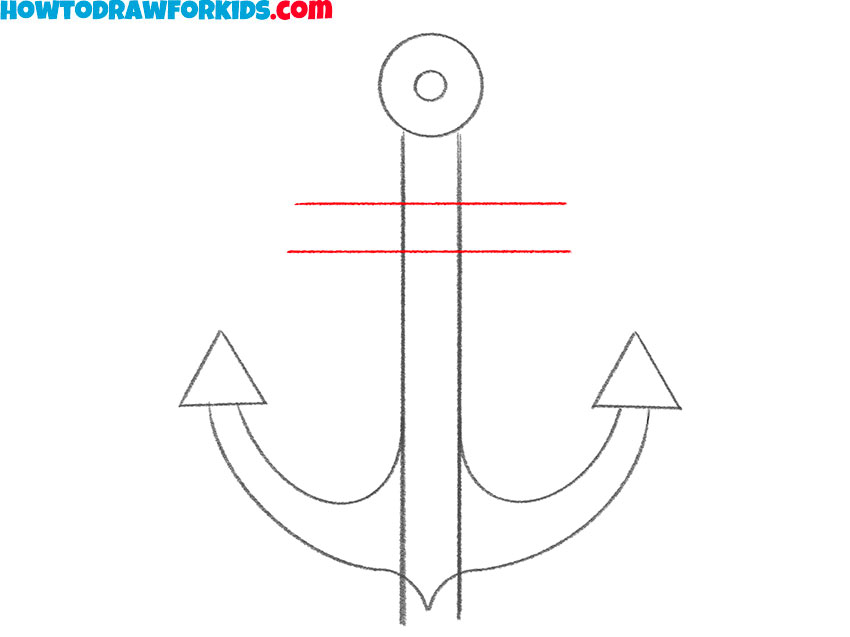
- Finish drawing the detail.
Connect the previously drawn lines with the same straight lines.
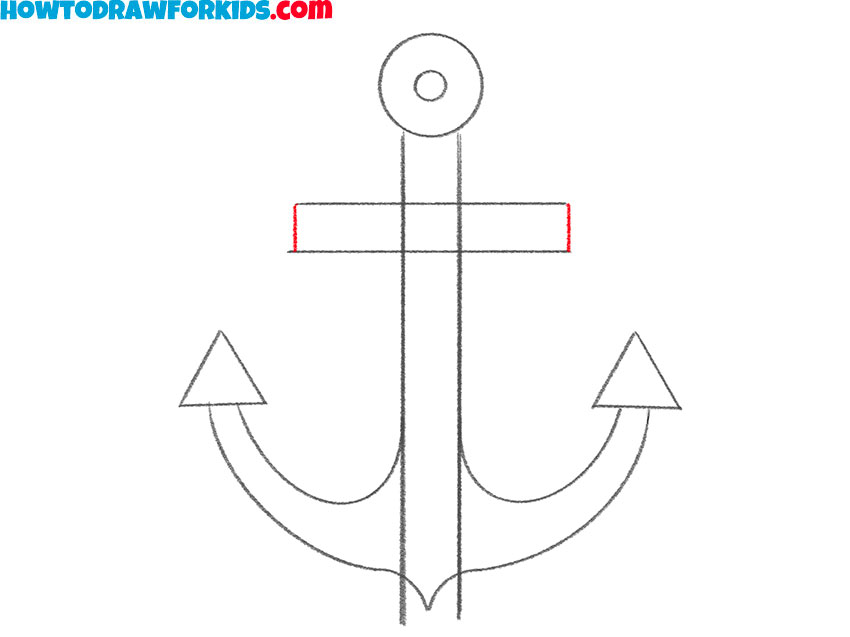
- Erase unnecessary lines.
Use an eraser to remove auxiliary lines that appeared during the drawing process.
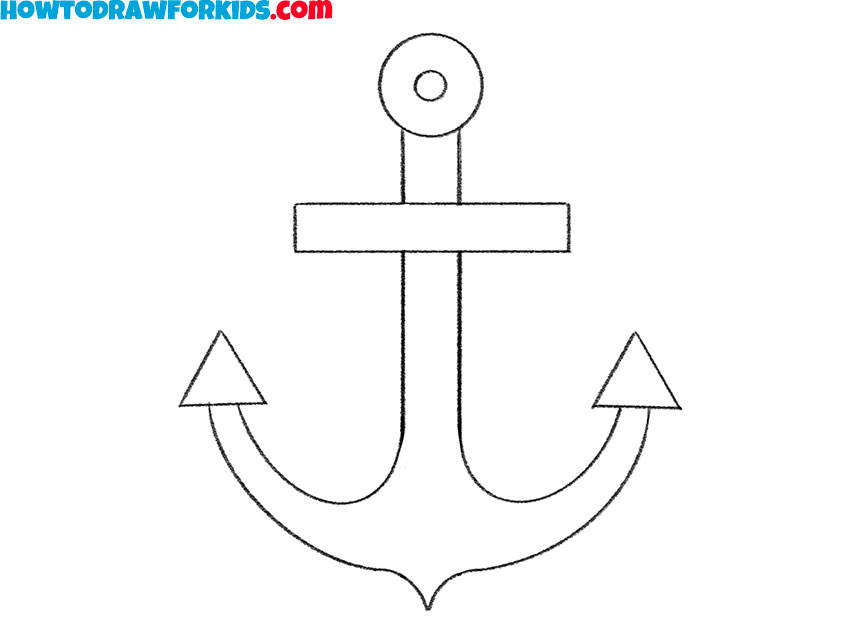
- Color the drawing.
You can use blue to color the whole anchor.
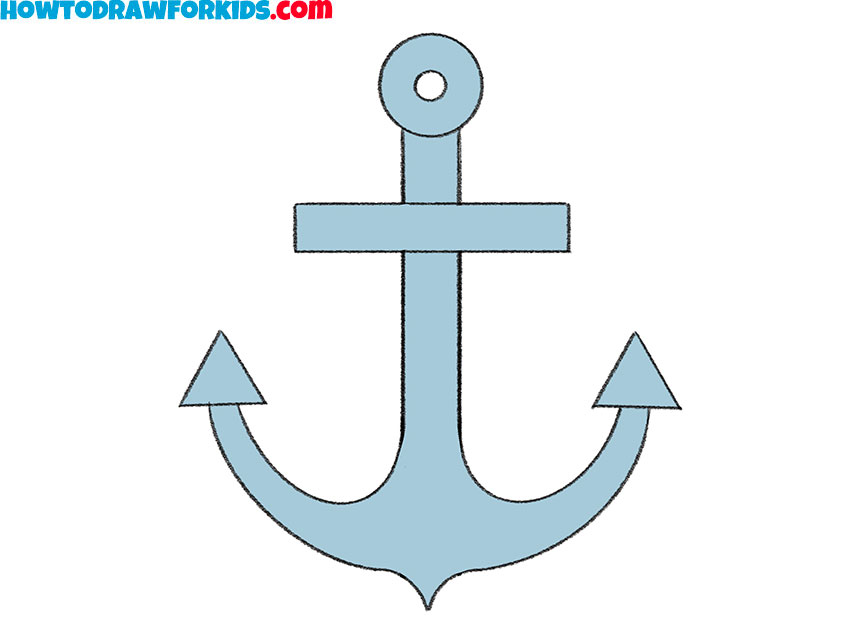
Additional Content
In addition to our online voyage, I’ve charted a downloadable PDF companion for this anchor drawing lesson. It’s the essence of our tutorial, captured in a format that sails with you into the offline world. Use it as your compass to navigate the artistic currents, even when the internet’s tides are out of reach.
This PDF isn’t a mere echo of our lesson; it’s a treasure chest of extra materials designed to deepen your artistic mastery. After you’ve traversed the initial lesson, these resources will help to refine your technique, sharpen your lines, and enrich your drawing journey. It’s the silent mentor for your continued practice, the wind that keeps your creative sails billowing.
Consider this PDF an artist’s beacon; a guiding light to help illuminate the path to proficiency. Once you’ve docked at the basic lesson’s port, this document will be the current that propels you forward, ensuring your skills are not anchored, but ever-expanding. Set sail with it, and let your creativity flow into new horizons.
Alternative Drawing Method
As we moor at the shores of our primary lesson, I’ve also forged an additional technique for drawing an anchor, one that edges closer to realism’s tides. This alternative method is a beacon for those seeking to challenge their burgeoning skills, adding weight and depth to your artistic arsenal.
While our first lesson laid the groundwork, this advanced approach beckons you to refine the anchor’s form, perfect for those ready to dock at the next port of their drawing journey. It’s a progression into more nuanced lines and shapes, a way to craft an anchor that bears the marks of craftsmanship and careful study.
Embark on this new artistic course with me, and allow it to expand your repertoire. With this alternate technique, the anchor you draw will not only symbolize stability but also exhibit the sturdiness and precision of a seafarer’s trusted tool. It’s your passage to mastering a more sophisticated and realistic representation.
How to Draw a More Realistic Anchor
We begin with a simple curve that hints at the anchor’s robust roundness, the start of a technique that will yield a sturdy symbol of maritime might. This method, layer by layer, gradually reveals an anchor’s form, capturing the harmony between its strong stock and balancing arms, crafting a piece that looks ready to delve into ocean depths.
With each subsequent step, our lines extend and bend, emulating the anchor’s familiar silhouette. The subtle flares at the tips and the gentle curve of the flukes are drawn with care, implying the anchor’s functional elegance. It’s an exercise in creating a balance between the simplicity of lines and the complexity of real-life objects.
By the final touch, the anchor we’ve drawn is not just a sketch but a visual anchor tethered to reality. The culmination of this method leaves us with an image that, while simple, possesses the essence of an anchor’s true form. It stands on the page as if ready to fulfill its timeless duty.
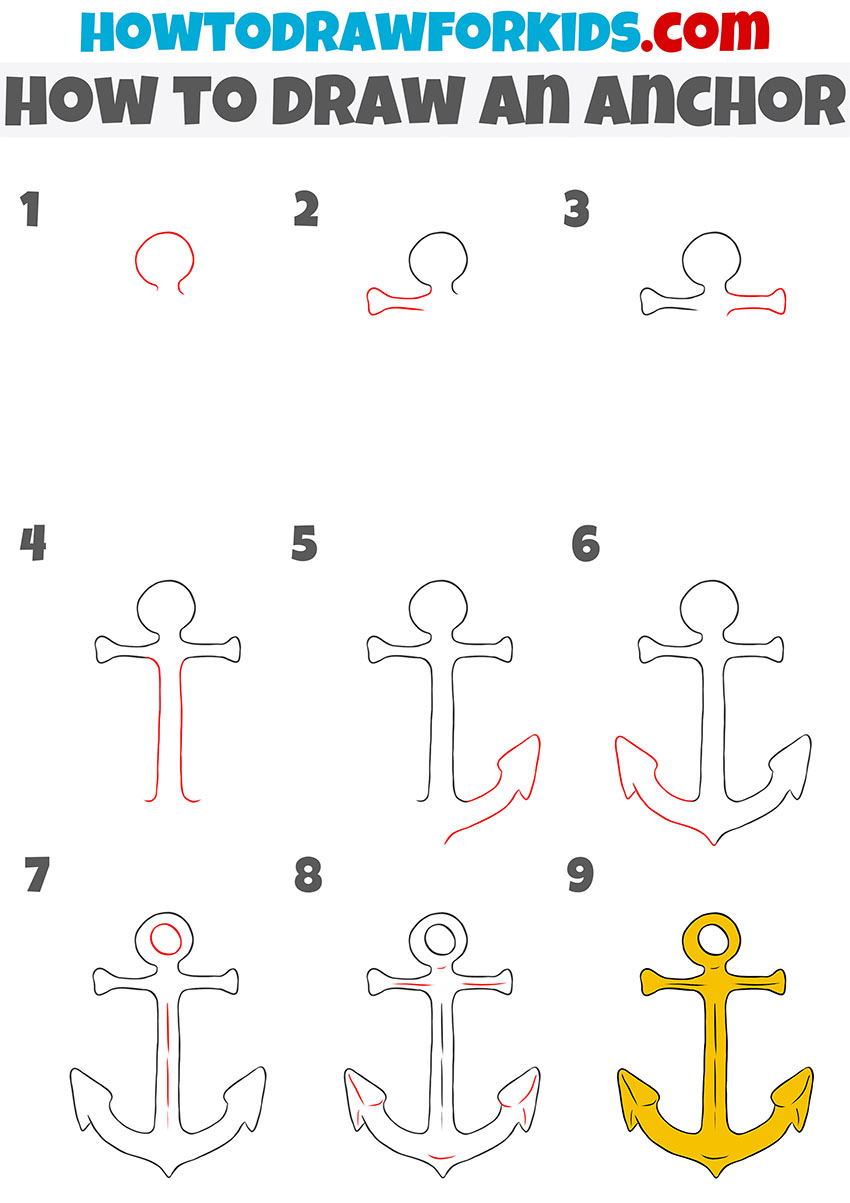
Charting the Course for Flawless Anchor Illustrations
As we weigh anchor on this artistic journey, let’s chart the waters of refinement with some navigational tips and tricks. These nuggets of wisdom are your co-captains, steering your drawing toward the shores of excellence. Here’s a compass to guide you through the seas of detail and precision.
- Steady Lines: Hold your pencil firm, for the anchor requires straight, unwavering lines. A ruler can be a first mate here, ensuring your anchor stands true.
- Symmetry is Key: An anchor’s strength lies in its balance. Use the grid method or a simple fold to check that both sides mirror each other perfectly.
- Anchor Points: Begin with marking the key points of your anchor. Knowing where the crown, arms, and shank meet will anchor your proportions correctly.
- Subtle Curves: The anchor’s flukes have a slight curve. Practice drawing smooth, consistent curves to capture the essence of a functional fluke.
In closing, let these tips and tricks be the stars by which you navigate your drawing. With practice, the rough seas of challenge become the smooth waters of skill, and you’ll soon be sailing with confidence on to your next artistic horizon. May the winds of perseverance and the currents of creativity guide you there.
Anchor Drawing FAQ Compass
At the conclusion of our drawing expedition, a sea of questions may still churn in your mind. These Frequently Asked Questions serve as a beacon, illuminating the finer points of our anchor-drawing odyssey. Let’s navigate these waters together to ensure your future sketches are as steadfast as the anchor itself.
- What can I use if I don’t have a ruler for straight lines? Any edge of a book or a piece of cardstock can be a worthy substitute. Even the edge of another sheet of paper can guide your pencil true.
- How do I ensure my anchor’s arms are symmetrical? Trace one arm onto a translucent paper, flip it over, and you have a template for the other arm, ensuring mirrored perfection.
- My anchor’s ring doesn’t look quite right. How can I improve it? Use a small circular object, like a coin or a bottle cap, to trace around, creating a round ring that’s as true as a compass.
- The flukes of my anchor seem off. Any tips? Imagine the flukes as part of a circle or an oval. Sketch lightly at first to create a guide, then define the shape from there.
Keep these FAQs in your captain’s quarters for reference, and may your next voyage into the arts be as smooth sailing as the one we’ve just charted. With practice, each question answered today will become a part of your intuitive knowledge tomorrow, ensuring that your art remains anchored in skill and confidence.
Conclusion
With our anchor now steadfastly etched on the page, the journey of creation casts its eyes toward new horizons. My website awaits with a gallery of lessons, where you can unfurl the sails of your imagination further – perhaps by giving life to a dragon’s face or capturing the crumbly texture of a cookie. Each tutorial is a new sea to explore.
Cast your net wider and join my social media fleet to catch the latest waves of content. Should a breeze of inspiration strike, chart it down in the comments below the lesson. Your musings will set the course for our next creative expedition, guiding us to the next artistic discovery together.


